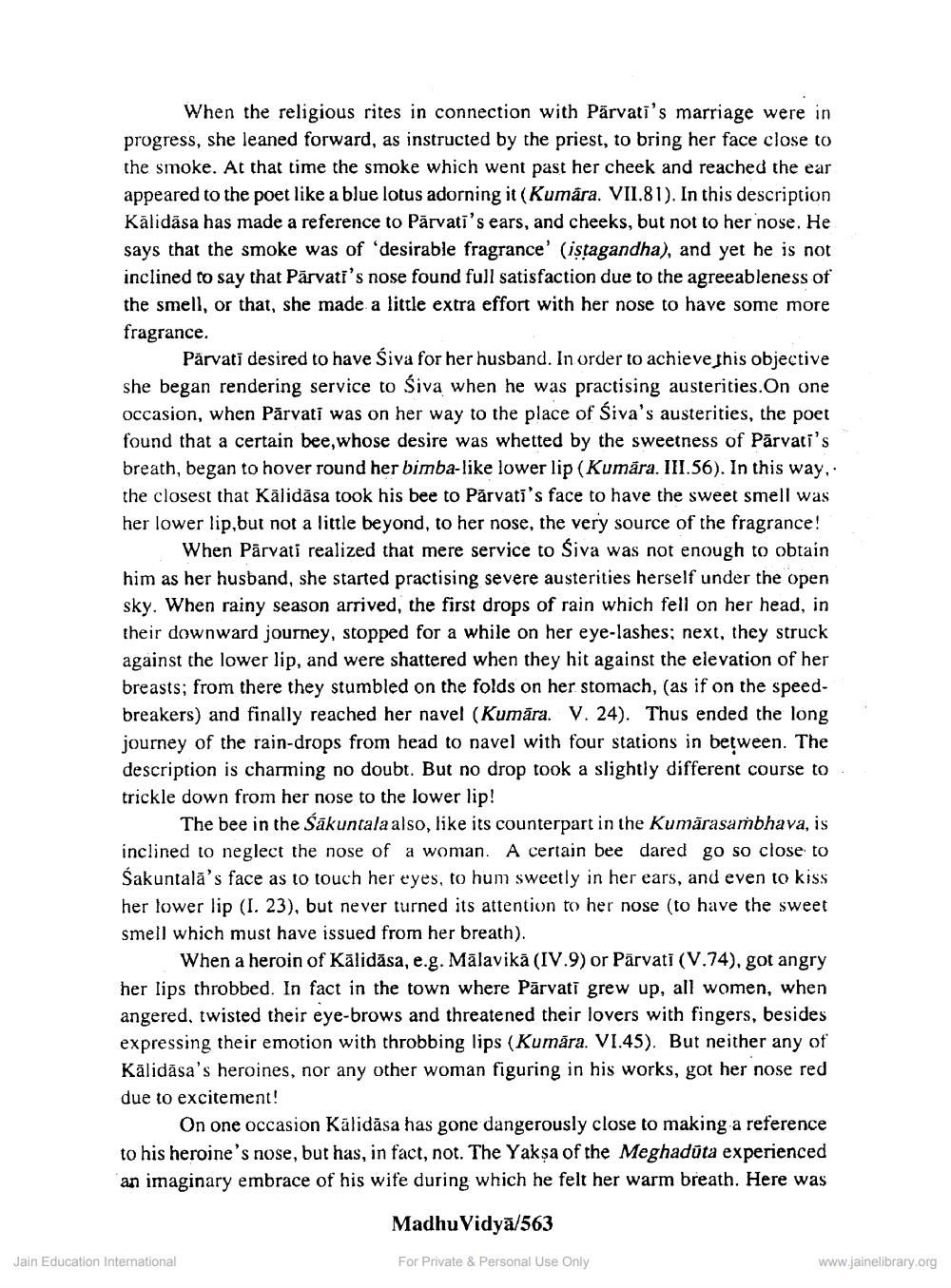________________
When the religious rites in connection with Pärvati's marriage were in progress, she leaned forward, as instructed by the priest, to bring her face close to the smoke. At that time the smoke which went past her cheek and reached the ear appeared to the poet like a blue lotus adorning it (Kumara. VII.81). In this description Kālidāsa has made a reference to Pārvati's ears, and cheeks, but not to her nose. He says that the smoke was of 'desirable fragrance' (istagandha), and yet he is not inclined to say that Pärvati's nose found full satisfaction due to the agreeableness of the smell, or that, she made a little extra effort with her nose to have some more fragrance.
Parvati desired to have Śiva for her husband. In order to achieve this objective she began rendering service to Śiva when he was practising austerities. On one occasion, when Parvati was on her way to the place of Siva's austerities, the poet found that a certain bee, whose desire was whetted by the sweetness of Pārvati's breath, began to hover round her bimba-like lower lip (Kumara. III.56). In this way.. the closest that Kālidāsa took his bee to Pārvati's face to have the sweet smell was her lower lip,but not a little beyond, to her nose, the very source of the fragrance! When Parvati realized that mere service to Siva was not enough to obtain him as her husband, she started practising severe austerities herself under the open sky. When rainy season arrived, the first drops of rain which fell on her head, in their downward journey, stopped for a while on her eye-lashes; next, they struck against the lower lip, and were shattered when they hit against the elevation of her breasts; from there they stumbled on the folds on her stomach, (as if on the speedbreakers) and finally reached her navel (Kumāra. V. 24). Thus ended the long journey of the rain-drops from head to navel with four stations in between. The description is charming no doubt. But no drop took a slightly different course to trickle down from her nose to the lower lip!
The bee in the Sakuntala also, like its counterpart in the Kumarasambhava, is inclined to neglect the nose of a woman. A certain bee dared go so close to Śakuntala's face as to touch her eyes, to hum sweetly in her ears, and even to kiss her lower lip (I. 23), but never turned its attention to her nose (to have the sweet smell which must have issued from her breath).
When a heroin of Kalidasa, e.g. Malavika (IV.9) or Parvati (V.74), got angry her lips throbbed. In fact in the town where Pārvatī grew up, all women, when angered, twisted their eye-brows and threatened their lovers with fingers, besides expressing their emotion with throbbing lips (Kumāra. VI.45). But neither any of Kālidāsa's heroines, nor any other woman figuring in his works, got her nose red due to excitement!
On one occasion Kalidasa has gone dangerously close to making a reference to his heroine's nose, but has, in fact, not. The Yaksa of the Meghadüta experienced an imaginary embrace of his wife during which he felt her warm breath. Here was
Jain Education International
Madhu Vidya/563
For Private & Personal Use Only
www.jainelibrary.org




